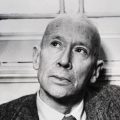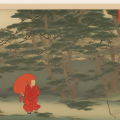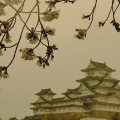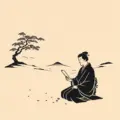Ekphrastic poetry is a type of creative writing that uses the visual arts as its inspiration. It has been around since several hundreds years B.C and was used by Homer in both The Illiad and The Odyssey. Over the past hundred years or so, it has become popular with poets such as W.H Auden, Robert Frost, and T.S Eliot all having written ekphrastic poems to celebrate great works of art throughout history.
Ekphrastic poetry can take many forms but typically involves describing or interpreting an artwork in poetic form, be it a painting, sculpture or photograph. It allows writers to explore their creativity while also engaging with different aspects of the original artwork from color palette to composition and emotion evoked. By combining both creative processes (writing and art), ekphrastic poetry challenges writers to think more deeply about what they are seeing; creating new interpretations and meanings from something already existing in the world .
Utilising ekphrasis in free verse can be incredibly powerful, and is a great way to expand on an idea, using an existing item or artwork as a metaphor. It can be used, depending on your chosen topic and physical thing, to explore practically any idea or theory you can imagine – from something as traditional as love or spirituality, to addiction, loss or philosophy.
Contents
- 1 What Is Ekphrastic Poetry:
- 2 Where Did Ekphrastic Poetry Originate?
- 3 What Are The Characteristics of An Ekphrastic Poem?
- 4 What Are Some Examples Of Ekphrastic Poetry?
- 5 What Role Do Other Forms of Art Play In Ekphrastic Poetry?
- 6 What Are The Main Variations on Traditional Ekphrastic Poetry?
- 7 Is Ekphrastic Poetry Still Relevant Today?
What Is Ekphrastic Poetry:
Ekphrastic poetry is a unique form of creative writing that seeks to combine both visual art and the written word. It involves describing, interpreting, or responding to an artwork in poetic form and allows poets to explore their creativity while also engaging with different aspects of the original artwork.
By combining both creative processes, ekphrastic poetry encourages writers to think more deeply about what they are seeing and create new interpretations and meanings from something already existing in the world. Ekphrastic poetry can be used to explore a wide range of different topics, from politics and social issues to nature and personal relationships.
It is also a great way for poets to capture the emotion of an artwork and use the power of words to add new depth and beauty to it.No matter what type of artwork you choose to write about, ekphrastic poetry can be a great way to explore your own creativity while also engaging with different aspects of art.
Where Did Ekphrastic Poetry Originate?
Ekphrastic poetry can be traced back to Ancient Greece, where it was used by writers like Homer in The Odyssey. Over the centuries, ekphrastic poetry has been with many renowned poets such as W.H Auden, Robert Frost, John Keats and T.S Eliot who have all written ekphrastic poems inspired by great works of art throughout history.
The first ekphrastic poem is generally attributed to Homer’s The Odyssey with its description of a beautiful woman sculpture titled ‘Nestor’s Cup’. In this poetic passage we see the beginning of this form of creative writing: “Beneath a deft hand had fashioned from pure gold/A two-handled cup that carried an inscription:/‘This belongeth Nestor; for friends the best/Reward our pains may yield when labours done’”.
This small part of a much larger work serves as a key example of how writers can interpret something existing in the world and transform it into something new through writing.
What Are The Characteristics of An Ekphrastic Poem?
Ekphrastic poetry, as a literary genre, has a few distinguishing characteristics that set it apart from other forms of poetry. However, it’s worth noting that a poem doesn’t need to obey all these “rules”, or possess all these characteristics in order to be read as an ekphrastic work.
- Art-Inspired: The most defining feature of ekphrastic poetry is that it is inspired by another piece of art. This art can be a painting, sculpture, photograph, music, or another form of visual or auditory art. The poem is a verbal representation of this visual or auditory stimulus.
- Descriptive: Ekphrastic poems typically contain vivid and detailed descriptions. They aim to convey the experience of the artwork to the reader, often invoking multiple senses to paint a complete picture.
- Interpretative: While description is a key element, ekphrastic poetry often goes beyond mere description to offer an interpretation or reaction to the artwork. It’s not just about what the artwork looks like, but also about what it means, how it feels, or the thoughts and emotions it provokes.
- Interactive: Ekphrastic poetry can interact with its inspiration in different ways. Some ekphrastic poems faithfully recreate the artwork, while others imagine a story behind it or explore the perspective of figures within the art. Still, others might use the artwork as a springboard for broader reflections.
- Emotional Response: The poem often seeks to capture the emotional response invoked by the artwork. This can be the poet’s personal emotions, the emotions they perceive the artwork to be expressing, or the emotions they imagine it might stir in others.
- Engages Multiple Art Forms: By its nature, ekphrastic poetry engages multiple art forms. It’s an exploration of the dialogue between poetry and visual or auditory art, and often bridges the gap between these different modes of expression.
- Reflective: Ekphrastic poems often contain a reflective element, where the poet considers the nature of art, the process of creation, or the experience of viewing or hearing art.
The genre is extremely flexible and allows for a wide range of approaches to interacting with art – basically, if you’re writing about another piece of art, you should consider it safe enough to call your work ekphrastic.
What Are The Rules of Ekphrastic Poetry?
Ekphrastic poems do not need to rhyme, but they do typically employ poetic techniques and methods of writing such rhythm and meter. The structure of an ephrastic poem can vary a traditional stanza or free format, depending on the poem’s purpose, length, and topic.
Generally speaking though, these poems often contain vivid descriptions that are structured with an artistic purpose in mind – to explore the artwork it is based off of in new ways. The use of poetic techniques such as alliteration or assonance are often employed to create aesthetically pleasing works that still remain faithful to their source material. Poets may also choose to employ figures such as metaphors and similes in order to emphasize particular aspects of a work or convey its emotional content more effectively than words alone can express.
What Are Some Examples Of Ekphrastic Poetry?
Notable examples of ekphrastic poetry include William Wordsworth’s “The Solitary Reaper” which was inspired by an old woman he encountered while traveling through Scotland in 1803. Another example is Alfred Lord Tennyson’s “Mariana” .
One debate among scholars and literary critics is whether Robert Browning’s poem “My Last Duchess” and Percy Bysshe Shelley’s poem “Ozymandias” are examples of ekphrastic works. Some argue that because these poems take inspiration from historical figures rather than a physical artwork, they aren’t considered true ekphrastic works; others contend that these poems still engage with visual art forms as they draw on paintings to inform how readers visualize the characters being described.
What Role Do Other Forms of Art Play In Ekphrastic Poetry?
Ekphrastic poetry is a way for poets to explore the relationship between art and language. It enables poets to capture the emotional power of artwork through words. In ekphrastic poetry, the poet must be able to interpret, interact with, and evoke the emotions of an artwork in order to communicate something new about it.
It allows for a unique dialogue between two forms of expression – visual art and poetry. In this type of poem, the poet is often inspired by a specific piece of art – whether it be a painting, sculpture, photograph, or some other kind of artwork.
The poem should not merely describe what is seen in the artwork; rather, it should extend beyond mere description to explore what is symbolized within it or how it might make someone feel. By exploring such topics as these, ekphrastic poems can add new depths and meanings to an artwork that may have never been fully appreciated before.
What Are The Main Variations on Traditional Ekphrastic Poetry?
Traditional ekphrastic poetry draws on visual art as its subject matter, though similar principles can be applied to writing about both auditory and performance art. However, there is a wide range of variations on the traditional form which are often seen as more exciting to work with by modern-day poets and artists.
What Is Reverse Ekphrasis In Poetry?
Reverse ekphrasis is a form of poetry in which the artwork functions as an anchor point from which to explore other topics. Instead of being focused on the image, these poems draw upon the emotions and ideas that are evoked by the artwork. Reverse ekphrastic poems range from narrative lyrical works to experimental pieces, and they often blur the line between visual art and poetry.
What Is Metarekphrasis In Poetry?
Metarekphrasis is a form of ekphrastic poetry in which the artwork serves as a source of inspiration for writing about not only the artwork itself, but also its creator or viewer. The poet uses the artwork as a springboard to explore topics such as its historical context, the artist’s intent and life story, or how the viewers’ experiences shape their responses to it.
What Is An Ekphrastic Haiku?
An ekphrastic haiku is a type of poem that takes its inspiration from visual art. A traditional haiku consists of three lines, usually structured in a 5/7/5 syllable count. Ekphrastic haikus contrast to traditional poems in that they focus on capturing the essence of the artwork rather than telling a story about it. These poems often serve as a way for poets to express their feelings and observations about the artwork in a concise manner.
Is Ekphrastic Poetry Still Relevant Today?
Ekphrastic poetry is still relevant today as it can be used to explore the relationship between visual art and language. It enables poets to capture the emotional power of artwork through words and create a unique dialogue between two forms of expression. The variations on traditional ekphrasis such as reverse ekphrasis, metarekphrasis, and ekphrastic haikus can also add new layers of depth and meaning to artwork.
Are People Still Writing Ekphrastic Poetry?
Yes, people are still writing ekphrastic poetry today. Ekphrastic poems allow poets to explore the emotional power of artwork and create a unique dialogue between two forms of expression – visual art and language.
Are People Still Writing Ekphrastic Poetry?
Yes, people are still writing ekphrastic poetry today. Ekphrastic poems allow poets to explore the emotional power of artwork and create a unique dialogue between two forms of expression – visual art and language.
Sasha Pimentel, for example, is a talented poet who has worked with ekphrasis in the past. Her beautifully-written poem, The Kiss, is an example of how ekphrasis can be used to great effect in modern writing.
It takes a painting by Gustav Kilmt and uses that as the opening point for exploring love, intimacy and the passage of time.
Ekphrastic poetry is still alive and well in today’s culture, with many talented poets writing works that capture the emotional power of artwork through language. It can be a great source of inspiration for poets who are looking to explore different ways to express their ideas, and a stunning entry point into a free verse form.
Ekphrastic poetry is a form that is often used without people necessarily realising that it’s a poetic form of its own. As its one of the few “forms” which focus directly on subject matter, rather than the structure of the poem, it is sometimes considered less challenging, exciting or practical to work in.
As ekphrasis allows to poet to focus on a specific object, and use that object or artwork as the gateway to a larger point, it can be an extremely powerful tool in the poet’s arsenal, particularly when it comes to free verse.
- Glossary of Japanese Poetry Terms - 26 February 2025
- What is Waka Poetry? - 23 May 2024
- How to Identify the Kigo in a Haiku: - 22 March 2024





